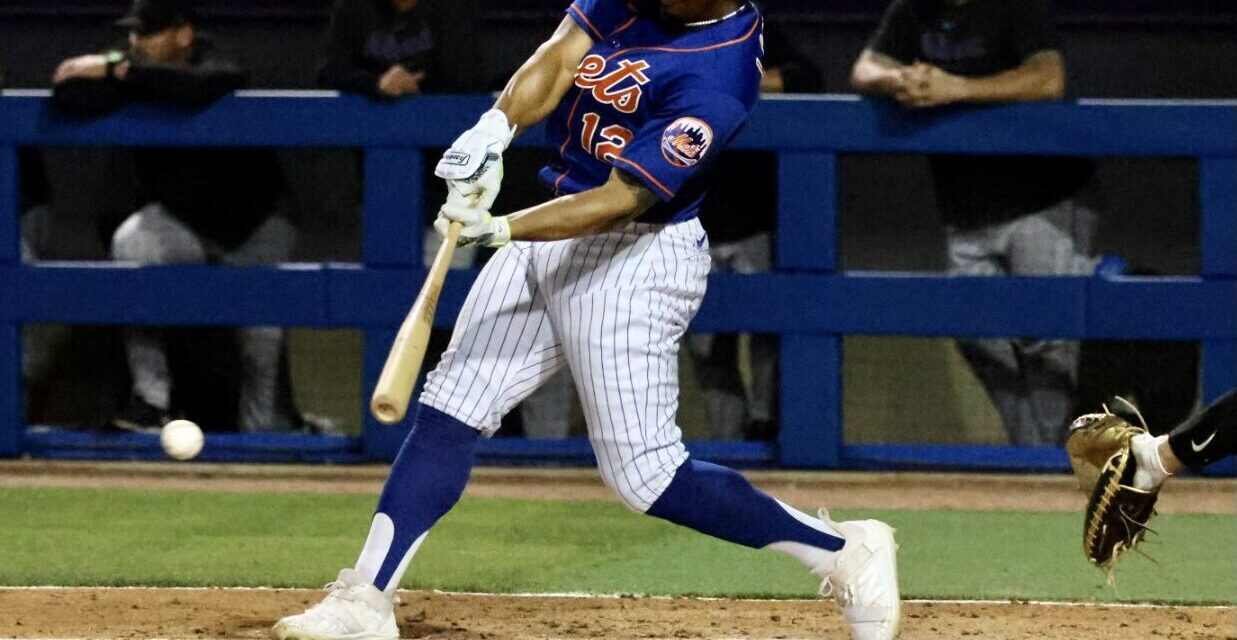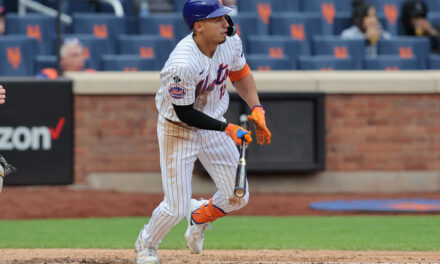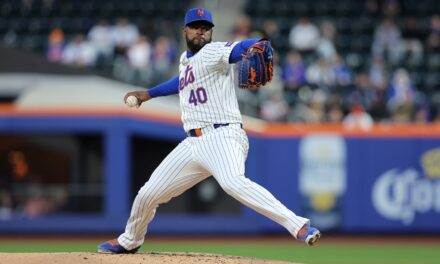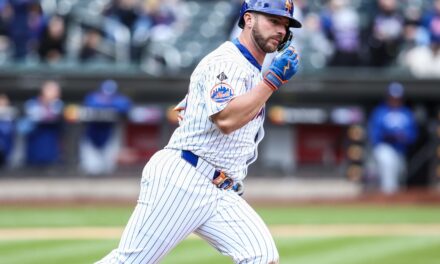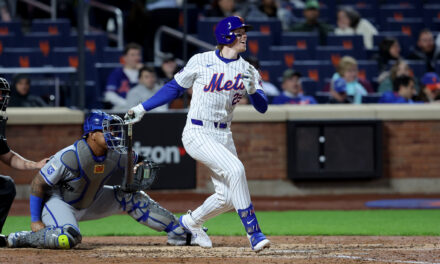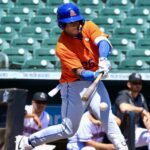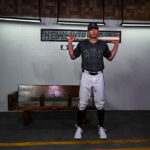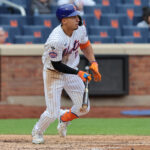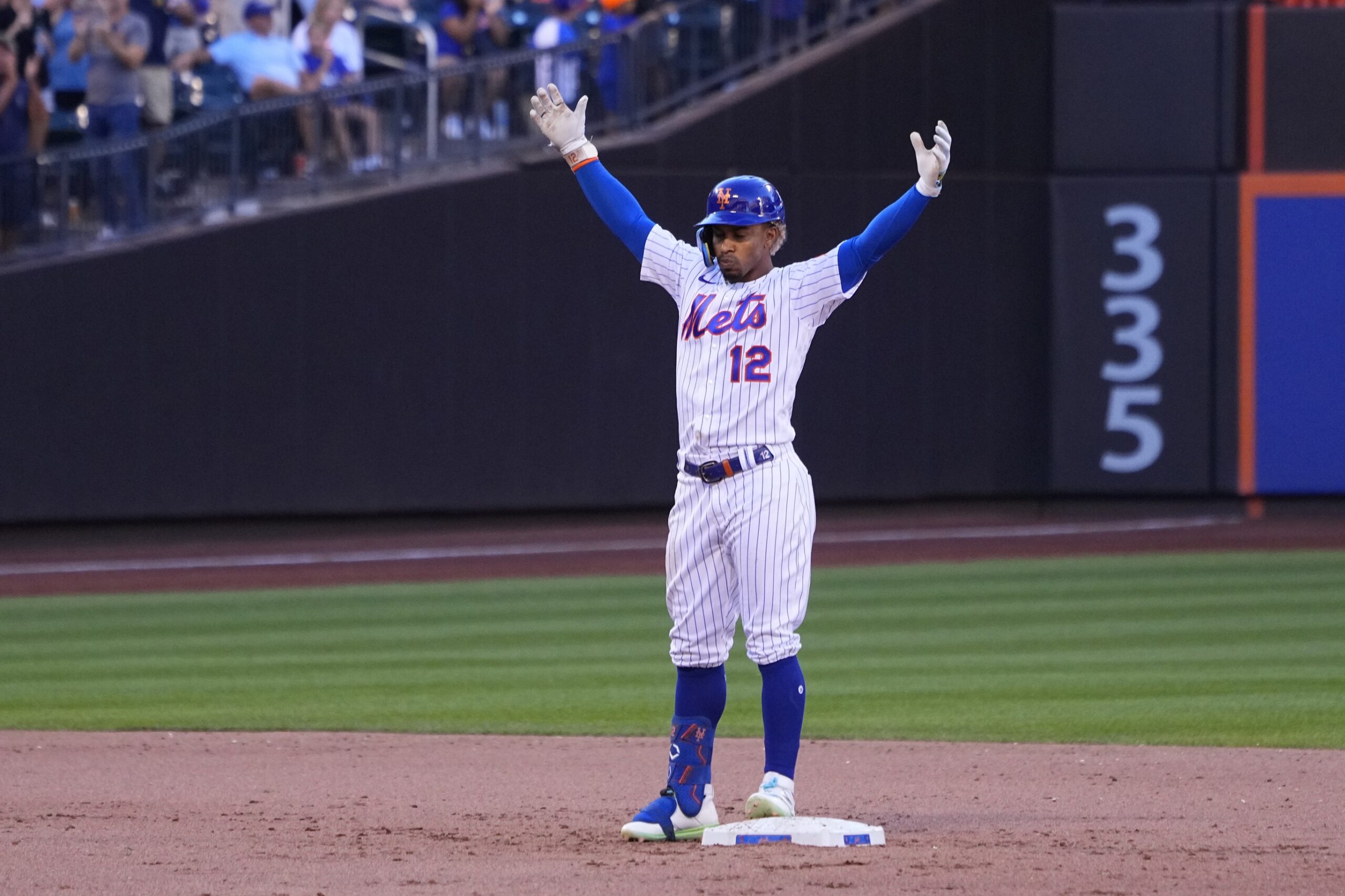
Francisco Lindor. Mandatory Credit: Gregory Fisher-USA TODAY Sports
We’ve made it, folks. It’s officially Opening Day of the 2023 season, and we are finishing our NL East preview with the home team.
The New York Mets are coming off of one of their best regular seasons in franchise history and have the pieces necessary to repeat their success in 2023. They endured an active and sometimes chaotic offseason that saw them lose a franchise cornerstone in Jacob deGrom while also adding a frontline ace in Justin Verlander among other key pieces. With the core mostly intact from 2022, however, the Mets are positioned to make a run at both the NL East title and the National League pennant.
Projected Lineup (per FanGraphs)
- Brandon Nimmo – CF
- Starling Marte – RF
- Francisco Lindor – SS
- Pete Alonso – 1B
- Jeff McNeil – 2B
- Mark Canha – LF
- Daniel Vogelbach – DH
- Eduardo Escobar – 3B
- Omar Narváez – C
Lineup Assessment
There’s very little turnover in this Mets lineup, but that’s not a bad thing.
The team finished sixth in both runs scored and wOBA and third in wRC+ last season, and we can likely expect more of the same in those departments this year. The Mets’ approach is largely centered around putting the ball in play and grinding at-bats, and the payoff should be even greater this year with the new shift rules. The lineup is deep and overflowing with experience, but it’s also lacking a bit in the power department and another true impact bat emerging would do wonders for this offense.
Everything the Mets do offensively runs through Brandon Nimmo. Nimmo, who re-signed with the team on an eight-year deal worth $162 million this offseason, is the epitome of a leadoff hitter and has a knack for getting on-base at an extraordinarily high rate. He slashed .274/.367/.433 with a 134 wRC+ and 5.4 fWAR last season while also mashing 16 home runs. He is an all-around threat at the plate that is a pitcher’s worst nightmare and is the perfect table setter for this lineup.
Starling Marte’s availability and production is as important as anyone’s for this Mets lineup. He slashed .292/.347/.468 last season while putting up 3.0 fWAR and a career-high 136 wRC+ to go with 16 homers in 118 games. Marte wasn’t as much of a factor on the base paths as expected in 2022, but perhaps the larger bases and new rules can reinvigorate him in that aspect of the game. The final piece of the outfield is Mark Canha, who characterizes the Mets’ teamwide approach perhaps more than anyone else in the lineup. His power numbers and batted ball data declined last year, but he still slashed .266/.367/.403 with a 128 wRC+ and 2.8 fWAR. He knows how to put the ball in play and get on-base, and re-discovering his power stroke in 2023 would be a huge development for the Mets’ offense.
Francisco Lindor still feels a bit underrated in the grand scheme of things. He was incredibly consistent and productive in 2022, slashing .270/.339/.449 with a 127 wRC+ and 6.8 fWAR along with 26 homers and 16 stolen bases. His defense gets a lot of the credit for him being the player that it is, and rightfully so, but he’s also one of the best offensive shortstops in the game and has continuously proven so during his prolific career up to this point. Lindor will once again be a force in the middle of the Mets’ lineup and provide a spark on a nightly basis.
Not much needs to be said about Pete Alonso. He’s one of the best power hitters in the game and is an intimidating presence in this Mets lineup. He slashed .271/.352/.518 with a 143 wRC+ and 4.0 fWAR along with 40 home runs and 131 RBIs last season. He feels like a lock to nearly match that production nearly every season, and it’s truly a luxury to have someone of his caliber in the lineup every night.
The bottom of the Mets’ lineup is a bit of a mixed bag. Daniel Vogelbach exploded on the scene after being traded before the deadline last season and slashed .255/.393/.436 in 55 games as a Met. He excelled in getting on-base and mashed righties but showed slightly less power than expected. He’ll likely platoon with Tommy Pham to start the year and should be productive in that role.
As for Eduardo Escobar, a strong start and finish to the season masked what was an otherwise disappointing campaign. He slashed .240/.295/.430 in total on the year while disproportionately crushing lefties. He has a good track record and provides some pop, but he’ll need to step up his game with Brett Baty breathing down his neck. The catcher position likely won’t yield much offensive firepower for the Mets as both Omar Narváez and Tomás Nido are defense-first players, but Narváez at the very least has multiple seasons with double-digit home run totals under his belt and finished with a 100 wRC+ as recently as 2021.
Players Lost
This discussion can’t be had without first mentioning Jacob deGrom.
DeGrom was the Mets’ resident ace for nearly a decade and earned the title of being the “best pitcher in baseball” while donning the blue and orange. Sure, he dealt with nagging injuries over the last few years and availability became a constant concern. That doesn’t take away from his overall impact and what he meant to the franchise during his time in New York, and him leaving for the Texas Rangers signaled the end of an era. He’ll always have his spot in Mets history and will go down as one of the best players in team history.
Chris Bassitt and Taijuan Walker also departed the Mets’ rotation for the Blue Jays and Phillies, respectively. Bassitt pitched just one year for the Mets but provided stability and production as the No. 3 starter with a 3.42 ERA and 2.7 fWAR across 30 starts.
Walker, on the other hand, was a member of the team for two years and pitched to a 3.49 ERA and 2.5 fWAR across 29 starts in 2022 for the Mets.
Trevor Williams and Seth Lugo round out the key contributors from last year’s roster that departed in the offseason. Williams signed with the division rival Nationals after a fantastic campaign in which he stepped up and pitched important innings for the Mets, ultimately finishing the season with a 3.21 ERA and 0.6 fWAR over 30 appearances.
Lugo held down a late-inning role in the Mets’ bullpen for several years but appears ticketed to return to his roots as a starter for the Padres. He recorded a 3.60 ERA and 0.2 fWAR in 62 games last season.
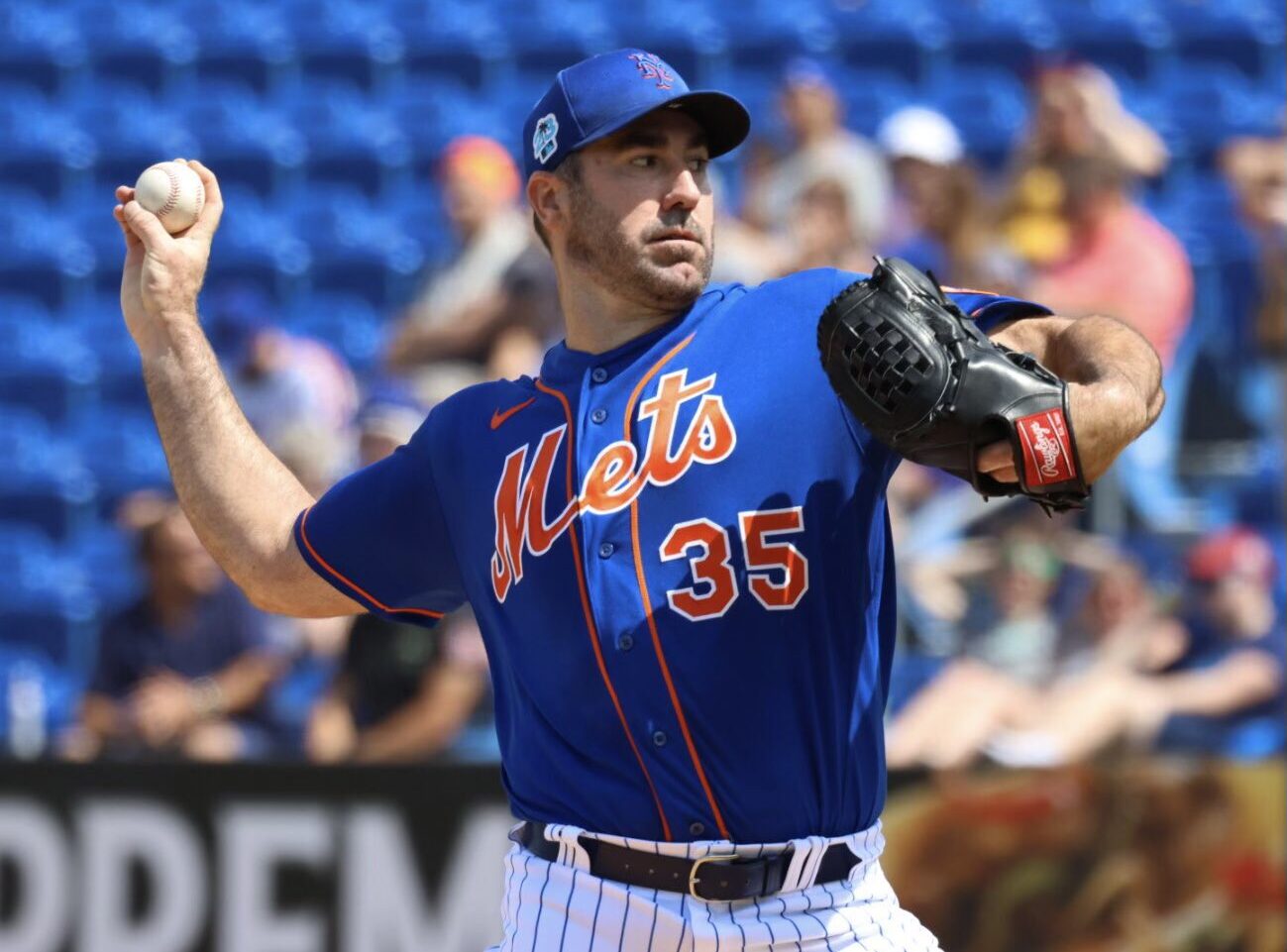
Photo by Ed Delany of Metsmerized
Pitching
In recent years, the Mets have built their success upon a strong foundation in the starting rotation. It’s no different in 2023 despite a few new faces entering the fold:
- Max Scherzer (11-5, 145 1/3 IP, 2.29 ERA, 2.62 FIP, 4.4 fWAR)
- David Peterson (7-5, 105 2/3 IP, 3.83 ERA, 3.64 FIP, 1.4 fWAR)
- Justin Verlander (18-4, 175 IP, 1.75 ERA, 2.49 FIP, 6.1 fWAR)
- Kodai Senga (NPB) (11-6, 144 IP, 1.94 ERA)
- Carlos Carrasco (15-7, 152 IP, 3.97 ERA, 3.53 FIP, 2.4 fWAR)
Tylor Megill is currently the Mets’ sixth starter, and he will start the season in Triple-A Syracuse following a 2022 season in which he recorded a 5.13 ERA and 0.6 fWAR over 15 appearances. José Quintana was one of the Mets’ big free agent signings this offseason after a great 2022 campaign, but a rib injury will hold him out until at least July. Joey Lucchesi also figures to factor in at some point as he continues to work his way back from Tommy John surgery that he underwent in 2021.
Scherzer will get the ball on Opening Day for the Mets with hopes of building off of a masterful first season with the team. Scherzer dealt with a couple of injuries in 2022 that limited him to 23 starts, but his impressive numbers were on par with the precedent that he’s set over the course of his career. Despite declining velocity and increasing age, Scherzer still rates as one of the best strikeout pitchers in the league while exhibiting fantastic control and a competitive fire that will seemingly never die out.
Peterson is coming off of a bounce-back 2022 season where he proved his worth as a potential middle-of-the-rotation arm in the big leagues. Peterson does struggle with giving up hard contact and his control is more than iffy, but a spike in his strikeout numbers as well as strong peripherals paint a more optimistic picture of his future output.
Verlander was this year’s big fish signing for the Mets and is the quintessential replacement for deGrom. He is coming off of a Cy Young-winning season where he was his vintage self after undergoing Tommy John surgery in 2020 and subsequently missing all of 2021. Verlander was dominant from start to finish last season and shows no signs of slowing down any time soon with fantastic peripherals and a workhorse mentality.
Senga and Carrasco make up the back end of the Mets’ rotation. Senga is a bit of an unknown as things currently stand as he is set to transition into MLB after an 11-year career with the Fukuoka Softbank Hawks of Nippon Professional Baseball. He showed promise during spring training and has a boatload of experience against premier talent in Japan, but there’s no telling how his skill set will translate to the big leagues. He is a high-risk, high-reward type of player that wows with velocity and his patented “ghost fork” pitch, but a lack of control and overall uncertainty makes it a waiting game with Senga.
Carrasco’s debut with the Mets in 2021 was disappointing, but he was a stalwart in their rotation during 2022 and is a dependable veteran that excels as an efficient innings-eater. His changeup and slider have both emerged as exceptional secondary pitches and have led to Carrasco owning one of the better chase rates in the majors.
The Mets’ bullpen looks a whole lot different than it did just a few weeks ago. With star closer Edwin Díaz set to miss the rest of the season after tearing his patellar tendon in the World Baseball Classic and a host of injuries to guys like Sam Coonrod and Bryce Montes de Oca, the Mets’ depth is already being tested. David Robertson figures to receive the bulk of the closing opportunities after a strong 2022 season with the Cubs and Phillies, but Adam Ottavino and trade acquisition Brooks Raley could also slide into that role as the team sees fit. Other notable options out of the ‘pen include Drew Smith after his solid campaign last year as well as Tommy Hunter, who returns for his third season with the club.
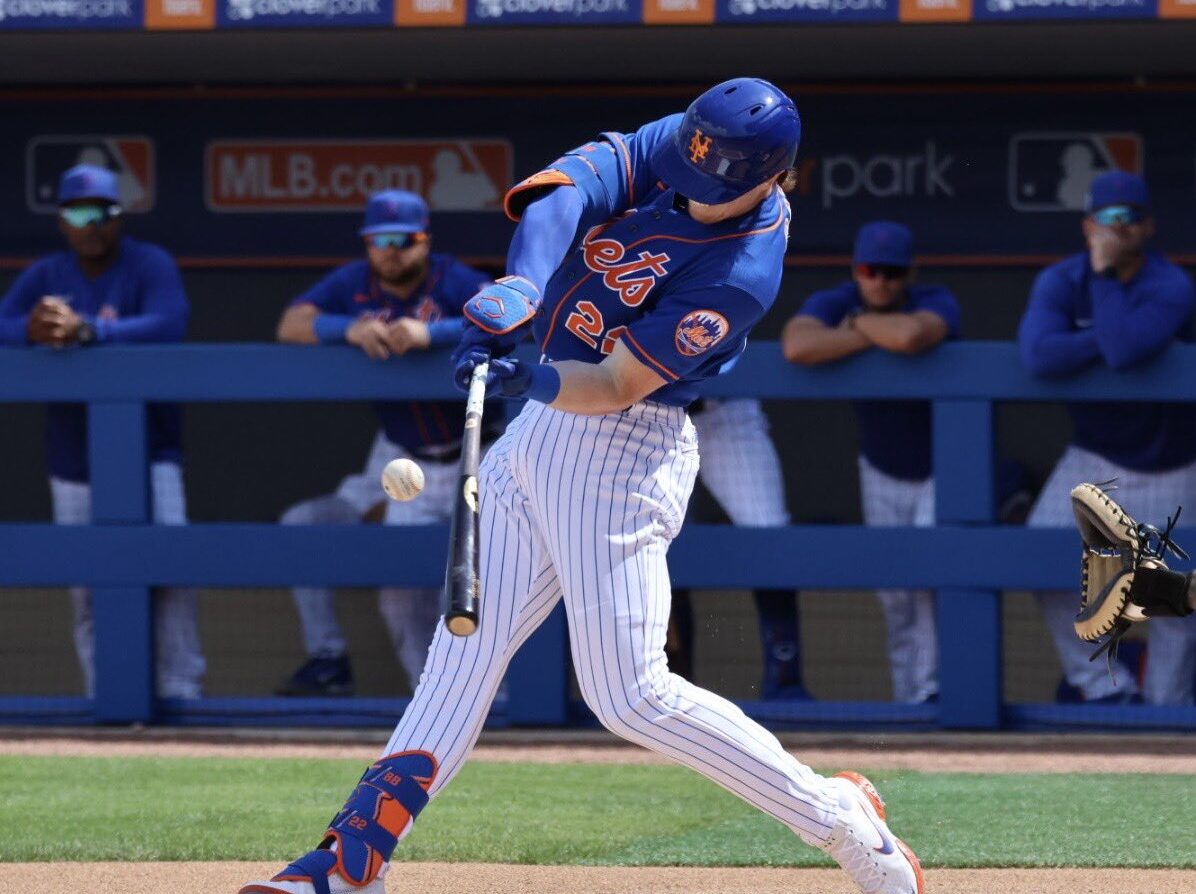
Brett Baty, Photo by Ed Delany of Metsmerized
Top Prospects
The Mets’ farm system is a perfect dichotomy between position players and pitchers. Francisco Álvarez and Brett Baty are both top-25 prospects in the league according to MLB Pipeline, and both are also expected to play a role on the Mets’ roster this season after debuting in 2022. Mark Vientos is another top position player prospect in the farm system that is major league ready and in line for a defined role on this year’s roster.
On the other hand, the Mets have very little upper-level pitching talent in line to be called up this season. For example, Blake Tidwell and Dominic Hamel are the team’s two top pitching prospects and neither player is expected to be ready until 2024 at the earliest.
That’s all to say that the Mets are in a good position regarding offensive reinforcements from the minors and can rely on depth there if needed, but that narrative changes when you switch to the pitching side. That more or less signals that the team needs to rely on its current pitching talent on the roster to perform and stay healthy, or else things could get dicey.


